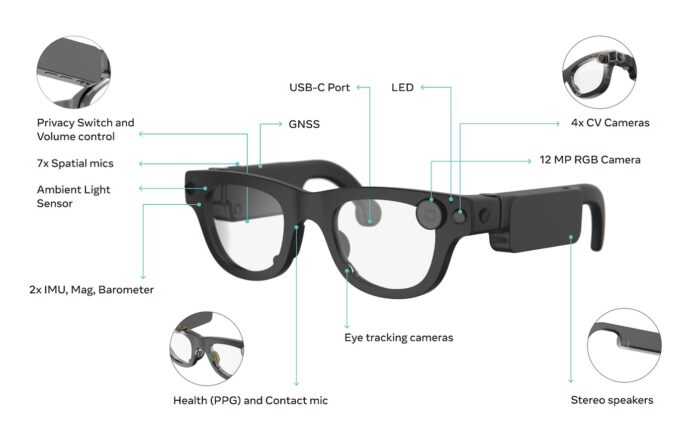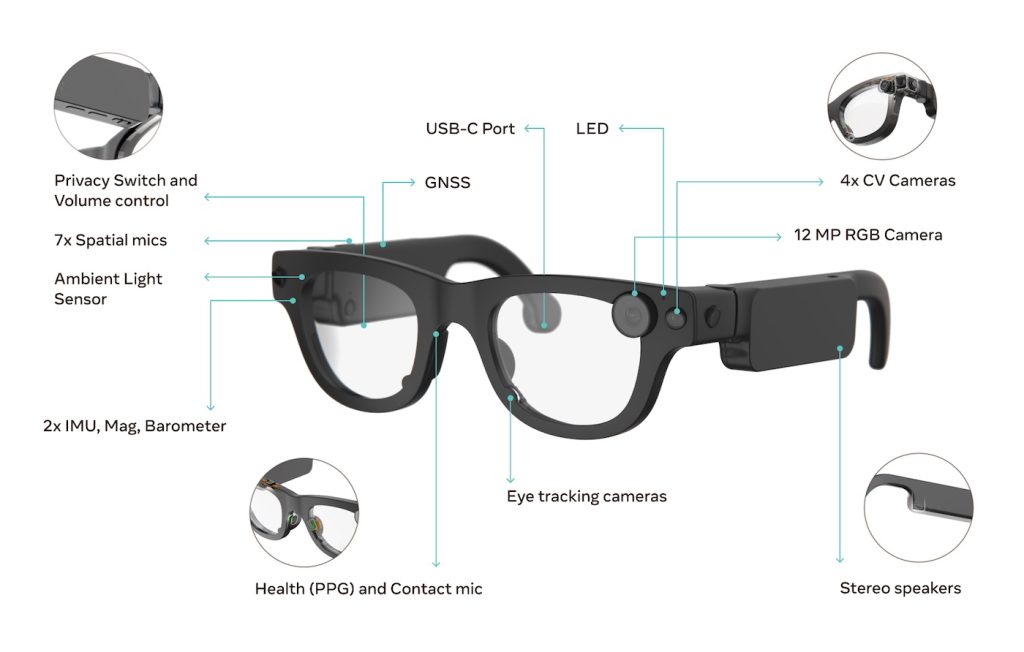

Meta is sharing more technical details about Aria Gen 2, the latest iteration of its glasses designed for researchers working in robotics, augmented reality (AR), contextual AI, and machine perception (MP).
The Aria Gen 2 was announced in February 2025, and now Meta is providing “…an in-depth overview of the form factor, audio capabilities, battery life, upgraded cameras and sensors, on-device compute, and more.”
Form factor
The Aria Gen 2 features numerous improvements to wearability compared to the original. Users have several size variations to choose from, including:
- Frame: 145mm / 152mm
- Temple arm lengths: 154mm / 158mm
- Nose pad: High / low
Depending on the size, the Aria Gen 2 weighs between 74 and 76 grams. While heavier than traditional eyeglasses, which typically weigh between 20 and 50 grams, the device maintains parity with the first-generation Aria glasses released in 2020.
Hardware enhancements include an LED status light, a built-in privacy toggle, stereo speakers, and integrated volume controls, all intended to support long research sessions without compromising comfort or usability.
Sensor integration
Meta’s Aria Gen 2 features enhanced exposure control and an ambient light sensor, ultimately resulting in improved functionality at lower frame rates. An integrated ultraviolet mode can differentiate between natural (outdoor) and artificial (indoor) lighting, and a total of eight microphones, including a contact mic in the nose pad, are installed in the Aria Gen 2.
The smart glasses include a heart rate monitor in the form of a photoplethysmography (PPG) sensor, which is also installed in the nose pad.
Computer vision and machine perception
With a high dynamic range (HDR) of 120 dB, the Aria Gen 2 doubles the visual range compared to the 70 dB capability. It includes no less than four CV cameras as well as an additional, 12 MP RGB camera. Moreover, it features a number of on-device MP algorithms, including:
- Visual inertial odometry (VIO): The Aria Gen 2 uses VIO to seamlessly map and navigate nearly any environment.
- Eye tracking: Meta’s new research glasses use two cameras, one below each lens, to actively track and measure the wearer’s eyes against numerous factors. These factors include pupil diameter, blink detection, vergence point, and others.
- Hand tracking: The smart glasses track the wearer’s hands, too, making it ideal for tasks like robot hand manipulation.
All of these algorithms rely on a custom coprocessor, created by Meta engineers, that is installed alongside the main processor.
Steering the future of cutting-edge research
Unlike consumer-facing smart glasses, Aria Gen 2 glasses are designed for scientists and researchers who are constantly pushing the boundaries of modern tech.
While applications for the Aria Gen 2 will open at some point in 2025, Meta is still accepting applications for researchers who want to get started with the original generation of Aria smart glasses.


